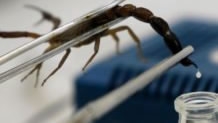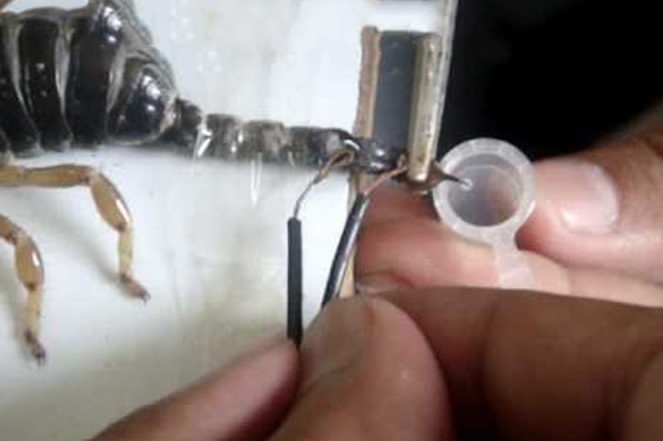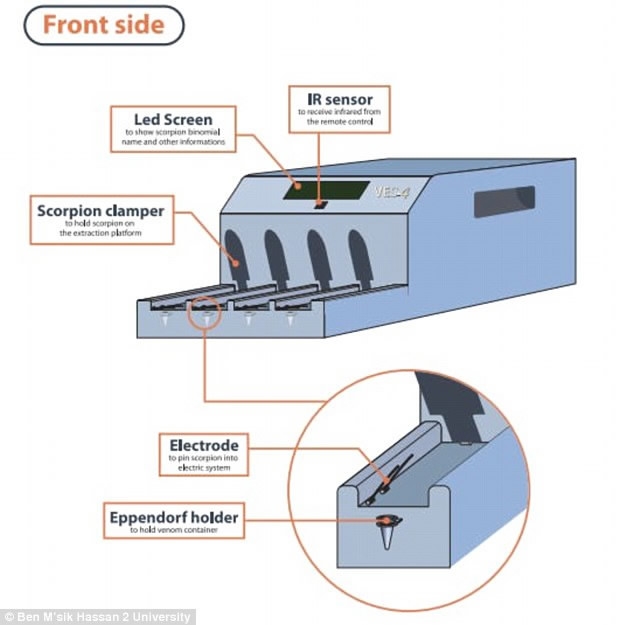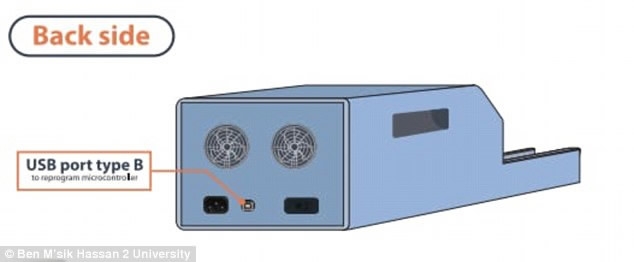
Tech & Sci
10:36, 02-Aug-2017
Scientists develop scorpion 'milking machine' for disease research

Extracting venom from scorpions can be a dangerous, but yet a rewarding task.
The poisonous secretion, while fatal to humans, contains hundreds of components that have potential uses in the health sector when they are broken down to a molecular level.

Extraction scorpion venom by hand /University of Hassan II Casablanca Photo
Extraction scorpion venom by hand /University of Hassan II Casablanca Photo
In a bid to remove the venom safely for both scorpion and extractor, a group of scientists in Morocco have developed a remote-controlled 'milking machine', which straps to the scorpion's tail and uses an electric impulse to stimulate the venom glands for the poison to be released.
"What makes it special is that it is safe and fast," said Mouad Mkamel, a researcher Ben M'sik University of Hassan II Casablanca who, along with a group of university scientists, developed the machine.

Front side illustration of the “milking machine” /University of Hassan II Casablanca Photo
Front side illustration of the “milking machine” /University of Hassan II Casablanca Photo

Back side illustration of the “milking machine” /University of Hassan II Casablanca Photo
Back side illustration of the “milking machine” /University of Hassan II Casablanca Photo
"If we were able to extract venom from ten scorpions daily in the past, today we can do it with up to 150 of them in a day."
According to the researchers, the business of scorpion-milking can be lucrative. They said that a gram of venom can be sold for around 8,000 US dollars, with venom from rarer scorpions selling for up to 12,000 US dollars per gram.

The death stalker scorpion’s venom is used to identify brain tumor cells. /University of Hassan II Casablanca Photo
The death stalker scorpion’s venom is used to identify brain tumor cells. /University of Hassan II Casablanca Photo
The team now waits for their patent to be approved and to start mass-producing their machine.
(Source: Reuters)
10035km

SITEMAP
Copyright © 2018 CGTN. Beijing ICP prepared NO.16065310-3
Copyright © 2018 CGTN. Beijing ICP prepared NO.16065310-3